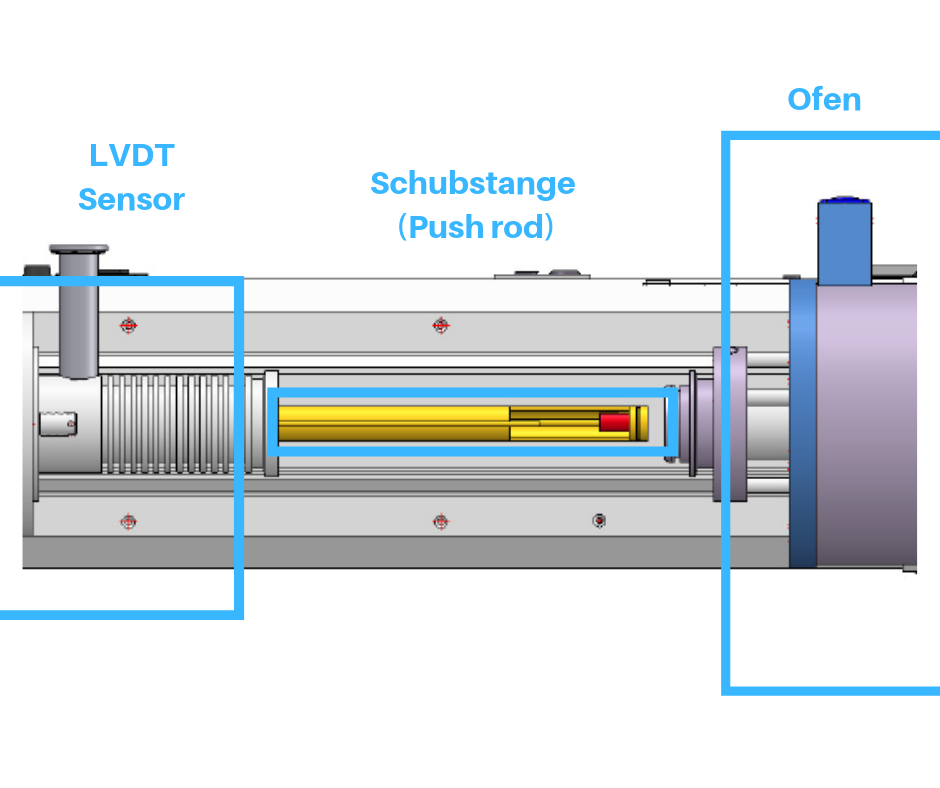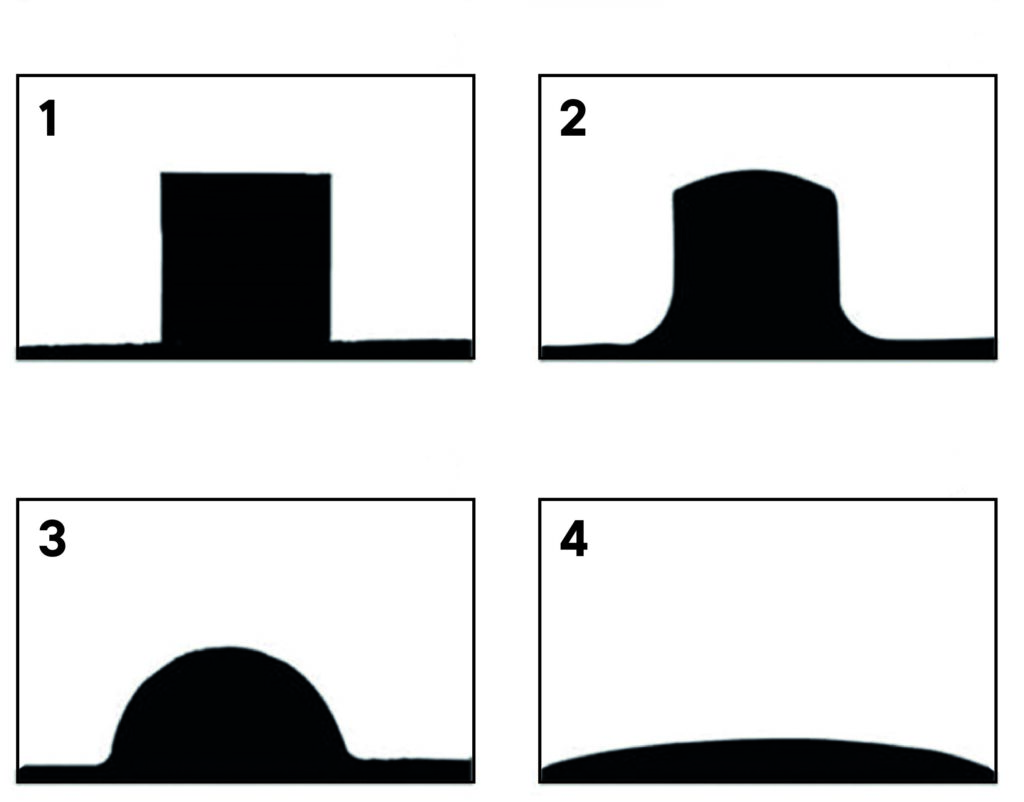Dilatometry
Dilatometry
Dilatometry (DIL) is a technique in which a dimensional change of a substance under negligible load is measured (e.g. expansion measurement or shrinkage measurement) as a function of temperature while the substance is subjected to a controlled temperature program in a specified atmosphere.

A red sample in a dilatometer
The following measurement results can be obtained by Dilatometry:
- determination of thermal expansion coefficient (CTE)
- linear thermal expansion (ΔL)
- sinter-temperatures and sinter steps
- determination of glass transition (Tg)
- phase changes
- optimization of burning processes
- volume changes
- Rate Controlled Sintering (RCS)
- decomposition
- density change
The coefficient of linear expansion – CTE
The coefficient of linear expansion is taken as the property for the change in length. the sample is placed on a sample holder in the furnace. A push rod made of the same material as the sample holder (quartz glass, aluminium oxide) transfers the thermal expansion of the sample to a displacement transducer which measures the displacement. The displacement is measured analog or digital.
The geometric dimensions of materials vary with changes in temperature. This can be described with the following linear coefficient of thermal expansion (CTE):
CTE linear = ΔL·1/ΔT·1/L
ΔL represents the change in length, which is caused by a change in the temperature (ΔT) in the length (L) of the sample
The displacement transducer is firmly attached to the reference. Since the reference and the push rod are also extended in the same way during heating, the sample expansion is measured relative to the material of the reference. The actual thermal extension of the sample is then equal to the value measured by the displacement transducer plus the expansion of a piece of reference material of the same length as the sample.
Optical Dilatometry
Optical dilatometry allows the investigation of sintering processes and the thermal linear expansion, especially of anisotropic and fragile materials as well as of samples with complicated geometries. In non-contact thermomechanical determination, the softening point and melting temperatures of materials can also be determined.
How does optical dilatometry work in a measuring device?
In thermo-optical analysis with a dilatometer equipped with a camera, the sample is irradiated with light from one side and the shadows are recorded on the other side. Based on the data obtained, a computer calculates the change in length of the sample.

Optical dilatometry – monochrome image taken during a heating process
The following norms relate to this method:
ASTM E831 – Standard Test Method for Linear Thermal Expansion of Solid Materials by Thermomechanical Analysis.
ASTM D696 – This test method covers determination of the coefficient of linear thermal expansion for plastic materials having coefficients of expansion greater than 1 µm/(m.°C) by use of a vitreous silica dilatometer.
ASTM E228 – Standard Test Method for Linear Thermal Expansion of Solid Materials with a Push-Rod Dilatometer.
